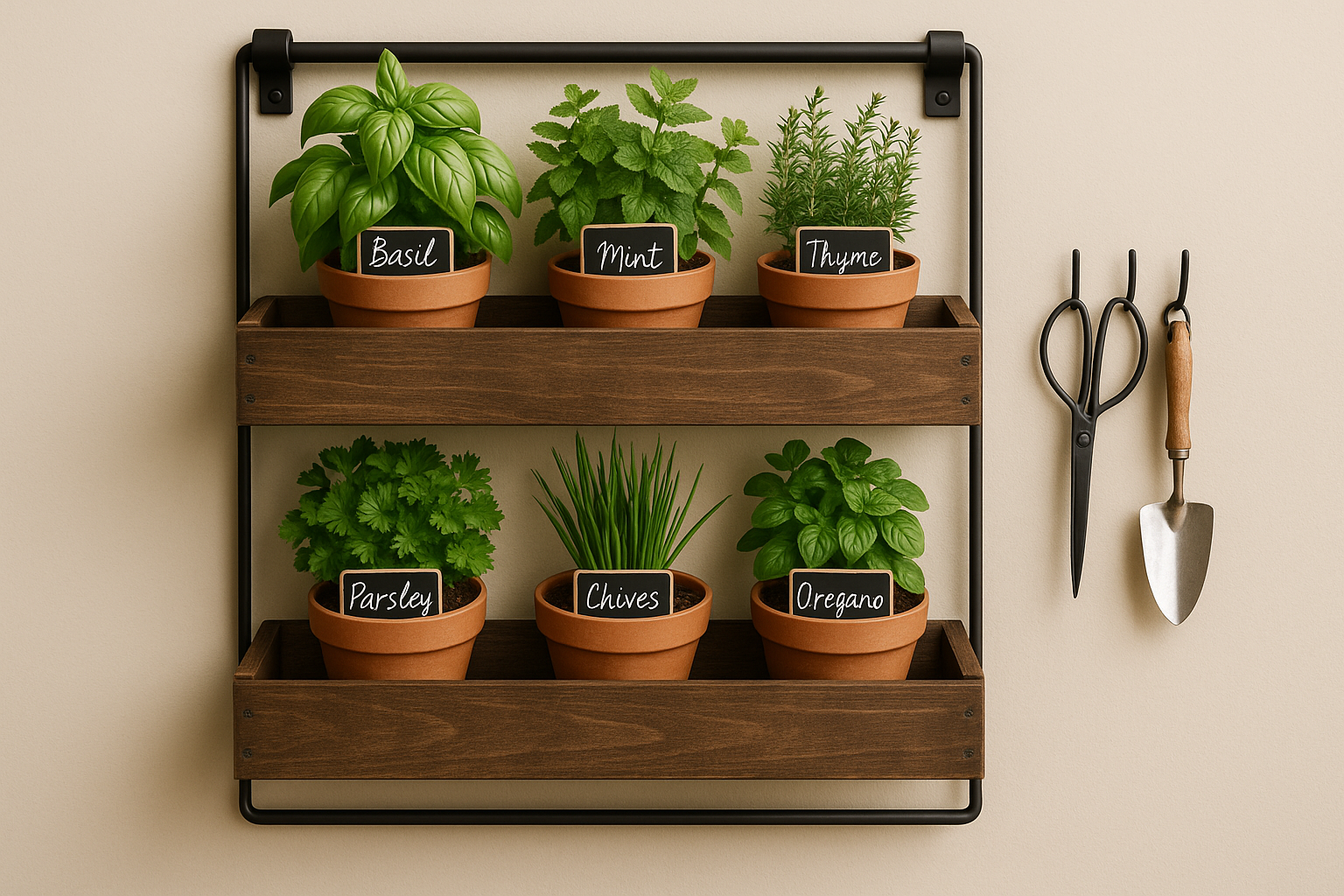Fresh herbs can transform your cooking—and your space. But what if you don’t have room for a full garden? A vertical herb garden is the perfect solution. It saves space, adds beauty to your home, and gives you fresh ingredients at your fingertips. Whether you’re in an apartment or just want a stylish setup, here’s how to create your own vertical herb garden.
Why Choose a Vertical Herb Garden?
Vertical gardens are ideal for:
- Small spaces like balconies and kitchens
- Easy access to culinary herbs
- Adding greenery to walls and patios
- A decorative and functional element in your home
They’re easy to maintain, cost-effective, and fully customizable.
Step 1: Select Your Location
Choose a spot that suits the needs of most herbs:
- Sunlight: Herbs need 4–6 hours of sunlight daily
- Accessibility: Pick a location near your kitchen or cooking area
- Protection: Avoid high wind or heavy rain zones if outdoors
- Indoors or outdoors: Windowsills, balconies, fences, or kitchen walls all work
Southern or eastern exposure is ideal for sun-loving herbs.
Step 2: Choose Your Herbs
Start with easy, versatile herbs:
Best herbs for vertical gardens:
- Basil: Loves sun, great for Italian dishes
- Mint: Spreads quickly, great for teas and desserts
- Thyme: Hardy and aromatic
- Parsley: Biannual, freshens almost any recipe
- Chives: Grows well in containers, adds mild onion flavor
- Oregano: Perfect for Mediterranean cooking
- Cilantro (Coriander): Popular for salsas and curries
- Rosemary: Needs good drainage, sun-loving
Group herbs by similar light and water needs.
Step 3: Choose Your Structure
There are many creative vertical structures to suit your space and style:
- Wall-mounted planters: Great for kitchens and balconies
- Hanging pots on rods or fences: Use S-hooks or brackets
- Pallet garden: Easy DIY project with recycled wood
- Ladder shelves or stacked crates: Rustic and practical
- Shoe organizers: Budget-friendly option for soft herbs
- Trellises or tiered stands: Adds dimension and elegance
Ensure the structure is stable and weather-resistant if used outdoors.
Step 4: Pick the Right Containers
Choose containers that provide:
- Drainage holes: Prevents root rot
- Lightweight material: Easier to hang or move
- Proper depth: Herbs don’t need deep pots—4 to 6 inches is enough
- Individual vs. shared pots: Some herbs (like mint) need their own space
Use saucers or liners to protect indoor walls and floors.
Step 5: Use Quality Soil
Good soil is key to healthy herbs:
- Use potting mix, not garden soil
- Add compost or organic fertilizer for nutrients
- Include perlite or sand to improve drainage
- Consider coconut coir to retain moisture
Avoid over-fertilizing—most herbs prefer lean soil for best flavor.
Step 6: Plant and Arrange
- Place sun-loving herbs like basil or rosemary on top rows
- Shade-tolerant herbs like mint or parsley can go lower
- Mix textures and colors for a beautiful display
- Label each herb with wooden tags or chalkboard markers
Keep taller herbs from shading smaller ones.
Step 7: Watering and Maintenance
Herbs in containers need regular attention:
- Water when topsoil feels dry—usually 2–3 times per week
- Use a spray bottle or narrow-spout watering can
- Trim herbs often to encourage bushy growth
- Remove yellowing leaves and check for pests weekly
Group herbs with similar watering needs for easier care.
Step 8: Harvesting Your Herbs
- Harvest in the morning when oils are strongest
- Snip above a leaf node to encourage new growth
- Don’t take more than 1/3 of the plant at a time
- Use fresh or dry your herbs for later use
Frequent harvesting keeps herbs growing strong and flavorful.
Creative Display Ideas
- Add fairy lights for ambiance on your balcony
- Use labeled chalkboard pots for a rustic kitchen look
- Mount planters on a wooden panel as wall art
- Combine herbs and flowers for color and utility
- Add hooks for gardening tools or scissors
Your herb garden can be as much a decor piece as a culinary tool.
Final Thoughts: Grow Up, Spice Up
A vertical herb garden is one of the easiest and most rewarding projects you can tackle. It brings beauty, fragrance, and flavor into your home—without taking up much space. Whether it’s a window rack or a backyard wall, your vertical garden will quickly become one of your favorite spots.

